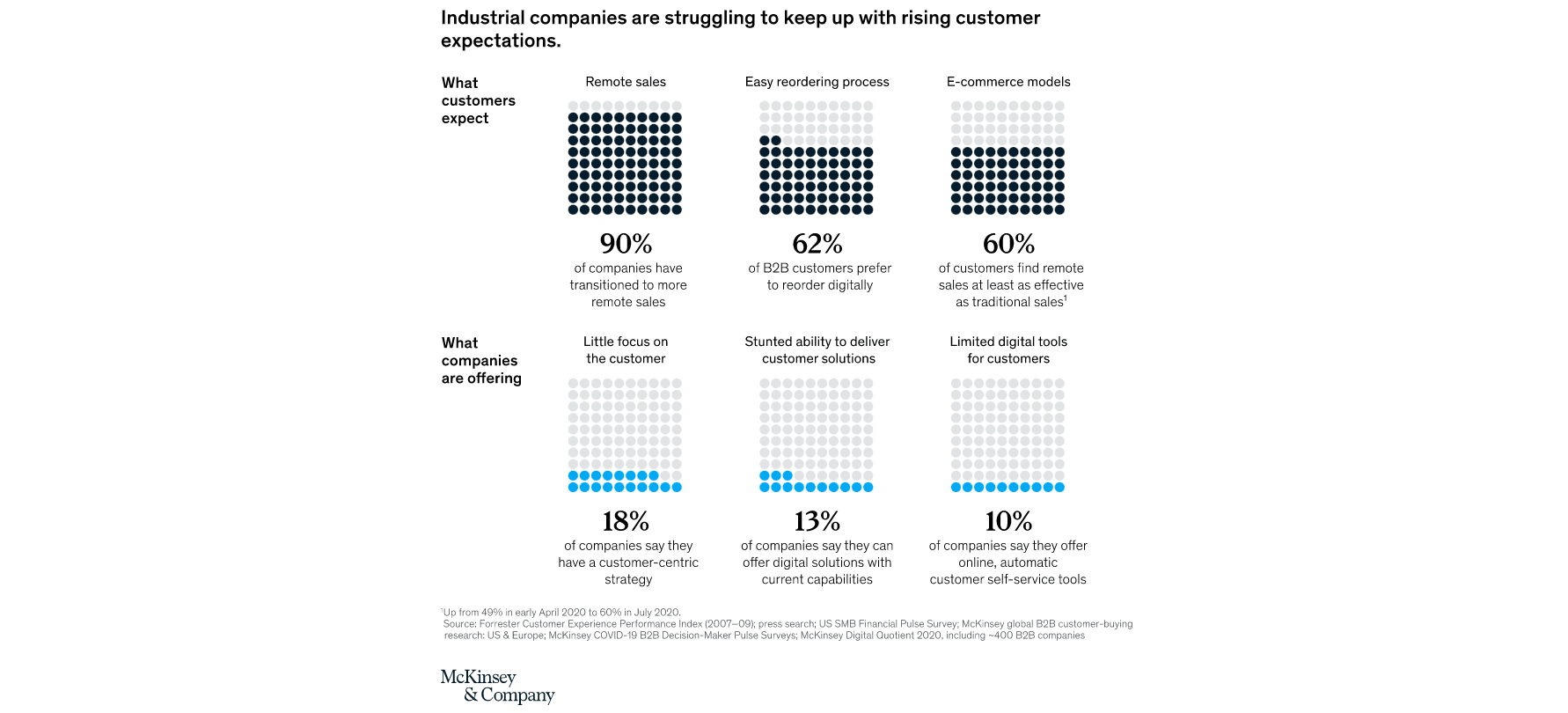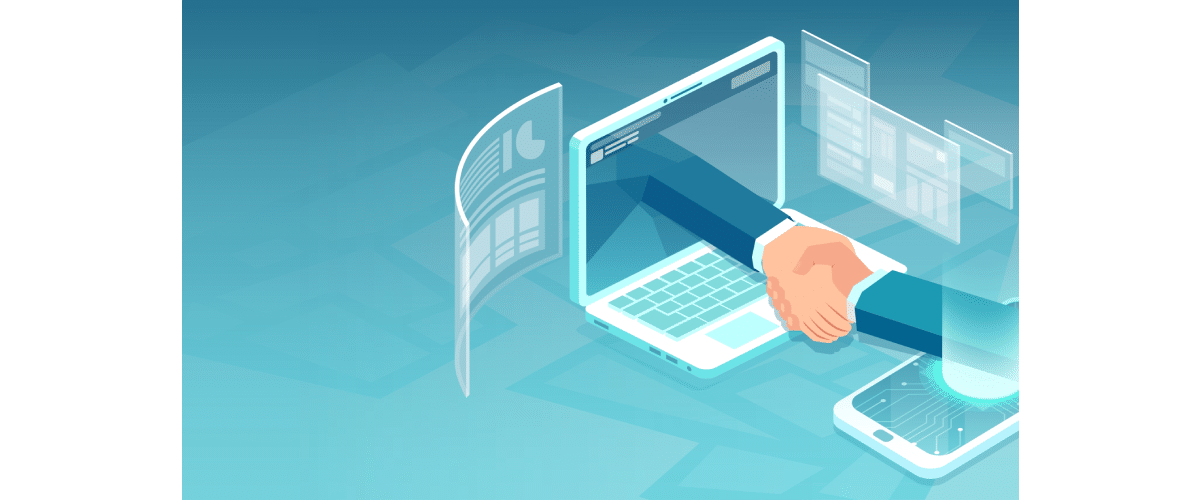If you’re old enough to remember when Jeff Bezos just sold books online, you’re of an age that sees sales through a singular view. Perhaps not as antiquated as the door-to-door salesperson of the mid-20th century, but not too far off.
Paper catalogs, telephone calls and in-person meetings seem as distant a memory as the rotary phone and dial-up.
While the consumer buying experience is now more futuristic (buying with a fingerprint or face ID, touchless transactions, and virtual dressing rooms), in the B2B world, this scenario is still seen as out of reach, or worse, unnecessary.
A recent article by McKinsey , “How industrial companies can put e-commerce at the heart of their growth strategy,” shines a light on the imperative of putting ecommerce at the heart of any B2B growth strategy.
While more and more customers prefer online interactions, with 62 percent of B2B customers reporting they prefer to reorder products online, only 13 percent of industrial OEMs say they can offer digital solutions with their current capabilities, and only 10 percent offer online, automatic self-service tools for placing reorders.

